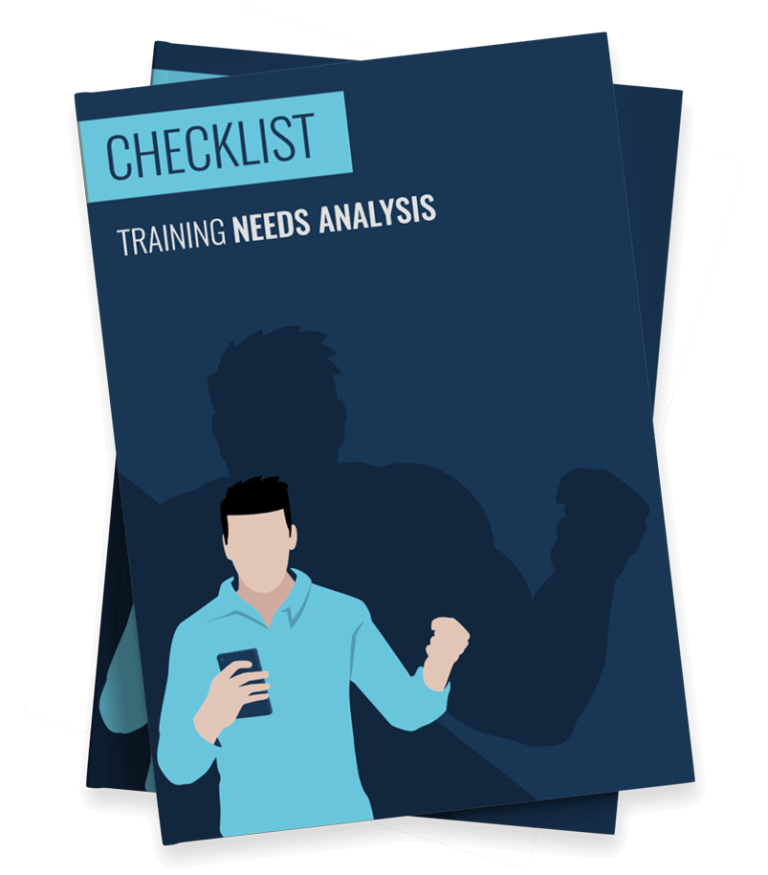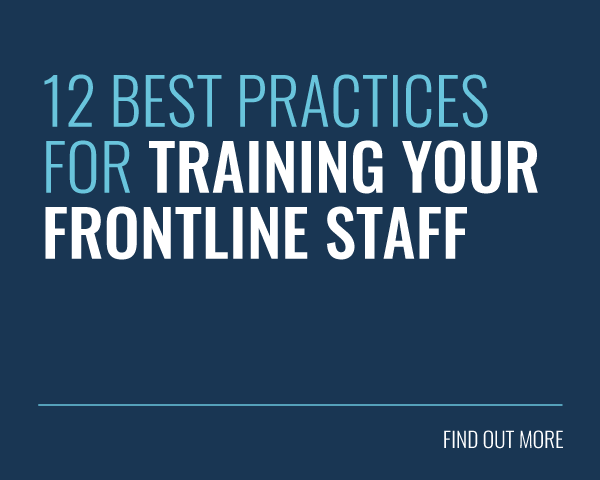 Digital disruption and remote working have had a transformative effect on the modern workplace. This, in turn, creates a need for new or updated skill sets and competencies. As a result, companies are experiencing a rapidly growing need to reskill and upskill their workforce to address pressing skills gaps.
Digital disruption and remote working have had a transformative effect on the modern workplace. This, in turn, creates a need for new or updated skill sets and competencies. As a result, companies are experiencing a rapidly growing need to reskill and upskill their workforce to address pressing skills gaps.
But how do you know if skills gaps exist within your organisation?
You need to examine your results to ensure your talent is fully aligned with your business needs. For instance, if your team’s performance affects your business metrics and customer satisfaction negatively, you know it’s time to do something.
Recognising your skills gaps will help you to shape your learning strategies. But how can you identify what skills your team is missing? And even more importantly, how can you overcome these gaps?
In this article, we will explore what a skills gap is, before introducing a 6-step skills gap analysis. This will help you to identify and bridge those urgent talent shortages!
What Is A Skills Gap?
Before diving into the ‘how to’, let’s go back to the basics and explore a skills gap in more detail. A skills gap illustrates the difference between skills that you need your employees to have and skills that your workforce currently possess.
It is a simple formula that determines the variances between the existing and desired skills levels in your organisation, team or individual employee:
Skills needed – Skills possessed = Skills gap
Why Do Skills Gaps Become an Issue?
In the same way that technology can create more jobs, it can also change and remove them. This creates a natural gap that must be overcome. In fact, skill requirements have changed ever since the first Industrial Revolution. The introduction of machines led to a change in what was required from workers.
But recently workplace changes have been quicker than ever before. As such, the skills gap has become a pressing issue in the current working world. Digital transformation has accelerated over the past two decades as artificial intelligence (AI) and automation are changing the nature of work.
As a result, it has been estimated that 54% of all workers need to update or replace their skills due to the rapid technological developments. In the UK alone, 12.6 million (23%) people lack basic digital skills.
The Impact of Skills Gaps
Skill shortages and mismatches can have a negative impact on the economy and the labour market. In fact, 70% of surveyed organisations report a skills shortage. Furthermore, 43% of employers say that although they have enough interest in open positions, the applicants do not have the required skills.
As such, the skills gap is a notable challenge, not only within organisations but also on the job market. This can result in increased costs, lost production due to unfilled vacancies and higher unemployment rates. And did you know, unfilled jobs already cost the U.S. economy 160 billion dollars every year?
On the other hand, organisations at the forefront of digital transformation are more likely to attract the talent they need. Unfortunately, slower adopters will have more limited options. Indeed, 54% of organisations think that the digital skills gap hinders their digital transformation.
Skills gaps are also more prominent in some industries. For instance, Deloitte found out that the skills gap may leave an estimated 2.4 million manufacturing jobs unfilled between 2018 and 2028. This could have a potential economic impact of a whopping 2.5 trillion dollars.
It’s evident that skills gaps can have a serious and wide-reaching impact. Luckily, a skills gap analysis can help organisations bridge the talent shortages effectively before they are in danger of experiencing the negative consequences.
Analysing Your Skills Gaps
To find out the current skill level of your organisation, you need to complete a skills gap analysis. A skills gap analysis allows you to assess the difference between your current actual state and your future goal state.
Organisation use a skills gap analysis to determine the skills currently missing within a team and identify the employees who require upskilling or reskilling. This underused tool can be extremely useful in helping your organisation to keep up with changes in the market.
It can also be a valuable post-training evaluation tool. When you know your employee lacks a certain skill, you can offer them training to improve. You can then conduct a skills gaps analysis to establish if (and by how much) they have grown their skills and knowledge.
In a nutshell, a skills gap analysis helps you identify your skills gaps and create a plan for addressing the talent shortages prevailing in your organisation. HR and L&D professionals will get a clear picture of what needs improving, which will help them close the current gaps.
The Benefits
Now you know more about why skills gaps arise and how you can identify your talent shortages. Let’s explore how a skills gap analysis can help your organisation:
1. It gives you an overview of your entire workforce
With a skills gap analysis, you can identify which employees have the most knowledge of particular topics. You can conduct an organisation-wide analysis that takes every department into account.
This will help you determine which teams do not have the required resources to meet your organisation’s objectives. As such, you will be better at targeting your training resources on the skills and business areas that need the most attention.

2. It boosts individual learning
A skills gap analysis also helps individual employees to boost their learning as they can find out what improvements they will have to make. They can then focus on improving the skills needed for them to perform as well as possible in their role. And eventually, they can master their job role!
Providing your existing employees with the training they require to close the gaps in their particular skill sets will also make them more productive. After all, they will have all the abilities they need to breeze through previously challenging tasks!
3. It will help your strategic workforce planning
Strategic workforce planning is all about making sure that you have the correct number of employees with the right skills in the best fitting job roles.
The business environment is constantly evolving. As such, you need to plan who you are training and when. This will help you to identify if you need an additional pair of hands to supercharge your team. A defined strategy that meets your business objectives and future needs is critical for a sustainable and flourishing workforce.
4. It helps you to optimise your recruitment strategy
Whatever skills you can’t develop internally, you’ll need to hire for externally. And it’s a lot easier to recruit good people if you can identify candidates whose skills better match those needed to function effectively in a particular role. Ultimately, hiring individuals with the right skills helps you to achieve your company’s objectives.
With a clear vision of your recruitment needs you can also save some precious funds. After all, the cost of replacing an employee can cost as much as two times the employee’s annual salary. It’s safe to say that no organisation wants to make a mishap and hire an unsuitable individual.
Having a strategy in place also means that you can foresee where the skills gaps are going to be and when these gaps are going to arise. As a result, strategic planning helps you to ensure these gaps are always filled with skilled people.
5. It creates a competitive advantage
When you combine all of the above, you’ll know the strengths and weaknesses of your workforce. And your intellectual capital is the key to sustainable competitive advantage. With skilled people, you can optimise your organisation’s performance. As a result, you will be able to stay ahead of the competition.
It’s also a way to keep up with changes in the working world. For instance, 54% of surveyed organisations agree that they have lost their competitive advantage because of a shortage of digital talent. With a skills gap analysis, you can identify the necessary changes and bridge the talent gap to enjoy a competitive advantage over those who don’t.
6 Steps To Conduct An Effective Skills Gap Analysis
Now you know the importance of running a skills gap analysis. It will help your company move forward as you gain invaluable insights into your workforce. ‘But what is the most effective process to analyse your skills gaps?’ I hear you ask.
We have put together a 6-step process that helps you to conduct a successful skills gap analysis.
Step 1: Plan Your Analysis

To plan your analysis effectively, you need to establish who you need to talk to in order to gain the most valuable insights. In addition, you can perform a skills gap analysis on two levels:
- Individual: You can identify what skills their job role requires and then compare them to your employee’s actual skill level.
- Team: You can determine if your employees have the skills to work on an upcoming project or if you need to hire external professionals. Team level analysis also helps you to target your training programmes effectively. This allows you to make sure your teams and departments have the skills they need to perform in their roles.
Step 2: Identify Your Business Goals
You can’t create a successful training programme without knowing your organisational goals. Identifying where you want your organisation to be in a year or in five years will help you understand what roles (and skills) will be needed in the near future.
Ask yourself and your stakeholders questions such as:
- Where is your organisation going?
- Are there any updates or developments on the horizon for the next 12 months?
- What skill sets do you require from your employees?
- Will they need different or updated skills in the next 24 months?
- What job roles need to be filled to allow your organisation to get where it needs to go?
- What skills do you value as a company?
Step 3: Focus on Future-Proofing
After you have identified what skills your workforce needs right now in order to get your organisation where it needs to go, you then need to focus on the future. When you think back even just five years, the working world looked very different. Similarly, we can expect digitalisation and technology to move forward even further in the next few years.
To remain competitive, every organisation has to adopt new technologies and embrace new practices to achieve growth. This means you need to consider future of work trends. For example, you might need to know:
- Which jobs have the potential to become automated?
- What skills or capabilities are currently on the rise?
- Will your company need positions that do not currently exist?
Step 4: Measure Current Skills
When you have identified what skills you need in your organisation and thought about the future, it’s time to measure your employees’ current skills! You can measure their skill levels in multiple ways:
- Examine individual employee’s key performance indicators (KPIs) to determine how each employee contributes to your organisation.
- Measure skills levels using assessments and surveys.
- Interview your employees to determine where they see their skills gaps.
- Check out individual or team performance reviews to see where your employees are lacking certain skills.
- Ask for feedback from everyone who comes into contact with the employee. This could include, for instance, their peers and line manager.
A learning management system (LMS) can be used to conduct many of these activities. For instance, Growth Engineering LMS offers all the tools you need to track your employee training and their progress.
Step 5: Identify the Gaps
In this step, you compare the skills that you have identified that your staff have, with the skills you need them to possess. The difference between those two elements is the skills gap you will want to bridge as soon as possible. Analysing the gaps allows you to identify the specific challenges your company is currently facing, or will be facing, in terms of workforce skills.
The gaps can be found in various areas within your organisation. For instance, 70% of retail employers are having trouble finding in-store candidates with appropriate technical experience. On the other hand, the financial and business services sector is expected to have a talent deficit of almost 3 million workers due to digital disruption.
Step 6: Put Your Findings Into Action

Once you have discovered your skills gaps, you need to make an action plan on how to fill them. In some situations, you might need to hire individuals with the desired skills to bring their expertise to the team.
But you can also bridge the pressing skills gaps through employee training. Let’s say you discover a certain percentage of employees aren’t confident using technology you have recently implemented. This means you need to create training programmes focusing on this technology to ensure your staff are up to speed.
Reskilling and upskilling your workforce allows you to maximise the skills and potential your employees currently have. And what better way to provide employee training than with an online learning solution? After all, modern learning and development has expanded its reach beyond the traditional classroom environment.
For instance, using a learning management system like Growth Engineering LMS will help you to improve your team’s performance whilst resulting in meaningful business impact. Features like gamification and social learning are guaranteed to engage your learners and turn them into learning addicts! As such, an LMS can be an excellent tool to address this impending issue of widening skills gaps.
The Importance of Regular Analysis
Well done! You now have the knowledge to conduct a skills gap analysis and address your current skills gaps. However, a skills gap analysis is not a ‘one-and-done’ business activity. To ensure your skills remain up-to-date, you should be prepared to conduct a regular analysis across your workforce.
In fact, whenever you develop or change your business strategy, you need to consider whether your employees have the skills to make it happen. You often require a skills gap analysis when you miss business objectives, have problems meeting business goals and introduce new technologies.
Having a systematic process can help your organisation in the following ways:
1. It helps you to make the best use of your training budget

On average, companies are spending $1,300 per employee, per year, on training. Skills gaps analysis gives you all the information you need to identify and fix training needs. As such, it can help you identify what training you should prioritise to get the most out of your training investment.
2. It can improve employee retention and productivity
47% of generation Y and Z employees are worried that their skill set is or will be redundant in the next four to five years. As such, employees are increasingly keen to build their skills and see their careers grow. In fact, according to the LinkedIn 2021 Workplace Report, 94% of employees would stay in an organisation longer if their employer invested in training.
A skills gap analysis can mark the beginning of that investment, while giving workers the skills they need to perform better in their roles. Once you have analysed the data, you can deliver personalised training programmes that will keep your learners engaged. A win-win if there ever was one, right?
3. It prepares your company for disruption
Future-proofing your organisational skill set can be extremely beneficial in the long run. Whether it’s developing AI, analysing data better or automating key processes, you should ensure you’re not left scrambling whilst your competitors speed on ahead.
4. It helps you to build strong teams for your future business needs
A skills gap analysis plays a big role in your strategic decision-making. You can prepare your workforce for the future by proactively building skills you may not necessarily need right now, but will be essential in the future. In doing so, your workforce will know what to prioritise and will be able to focus their learning.
Final Words
When you analyse and address the skills gaps in your workforce, you get useful information about your teams’ strengths and weaknesses. As such, conducting a skills gap analysis will help you make sure your talent meets the needs of your future business.
It’s a way for you to get an overview of the capability of your whole workforce, while being able to boost individual learning. Strategic workforce planning will ultimately lead to better productivity and improved competitive advantage.
And you can rest assured you have taken the appropriate measures to address any skills gaps threatening the growth of your organisation!






